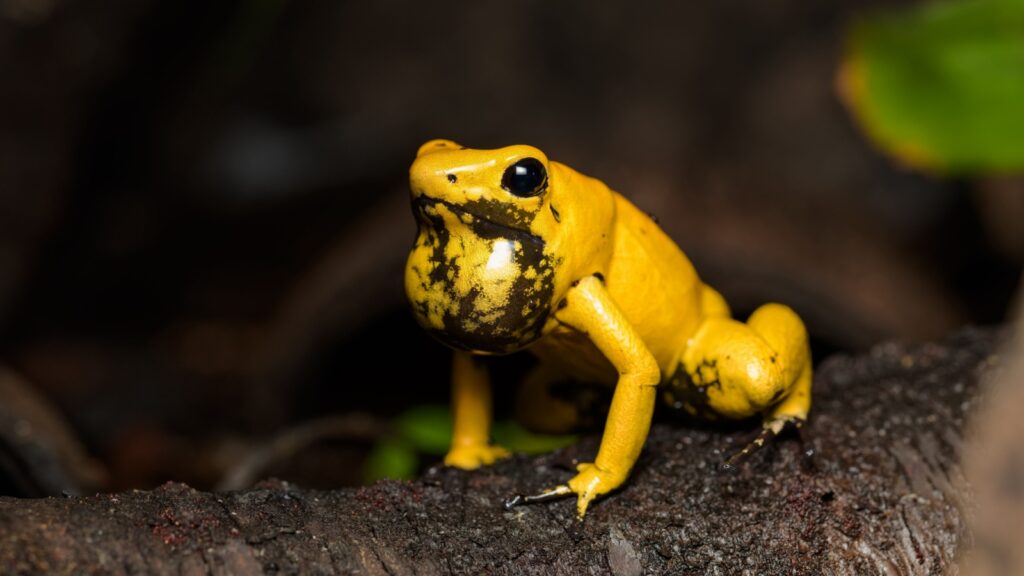The golden poison frog might be small, but it packs a deadly punch. This vibrant amphibian, found in the rainforests of Colombia, is one of the most poisonous creatures on Earth. These tiny little guys pack a huge, deadly punch, but you’d never know it to look at them. Golden poison frogs are utterly fascinating. Take a look!
Tiny But Mighty
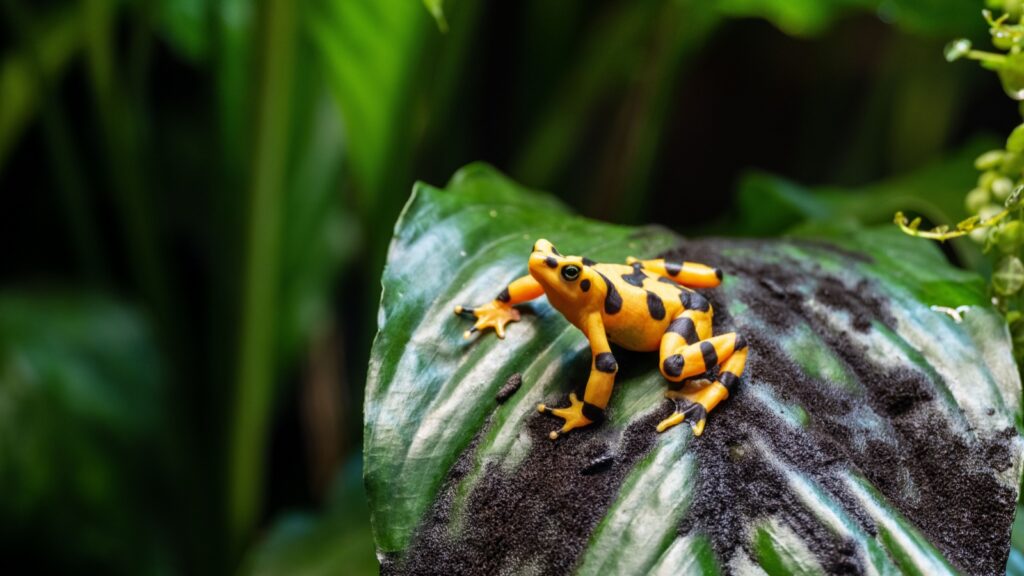
The golden poison frog is incredibly small, measuring only about two inches in length. Despite its tiny size, it’s one of the most dangerous animals in the world. These frogs can fit comfortably on a silver dollar, yet they carry enough poison to kill several adult humans. Their small size makes them even more dangerous, as they can be easily overlooked in their natural habitat.
Deadliest Frog on Earth
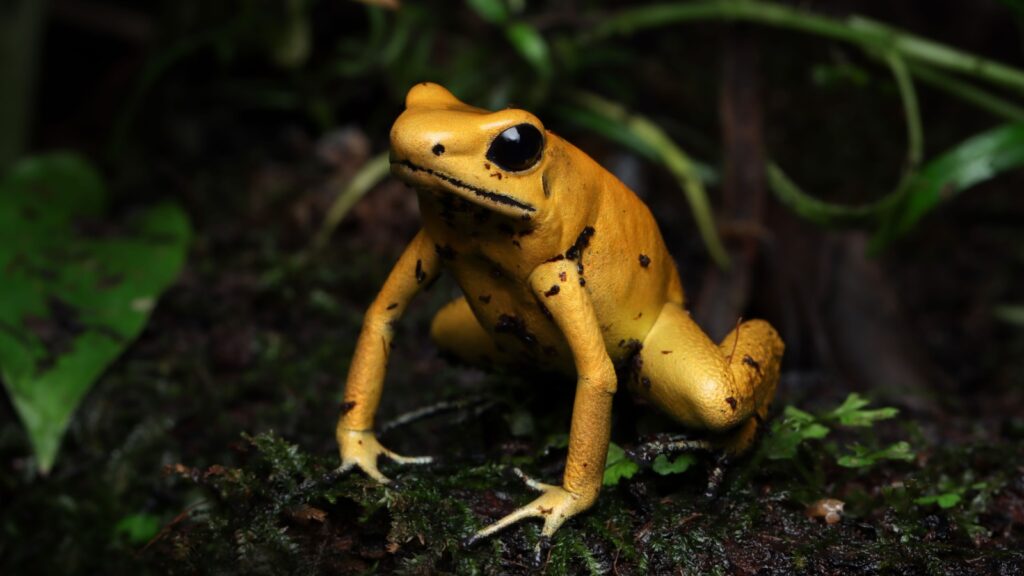
A single golden poison frog has enough venom to kill up to 10 grown men. Their skin contains batrachotoxins, which are extremely potent neurotoxins. These toxins prevent nerves from sending signals, leading to heart failure. The poison is so strong that even touching the frog can be dangerous. Indigenous people have used this poison for centuries to tip their blow darts for hunting.
Not-So-Golden Origins
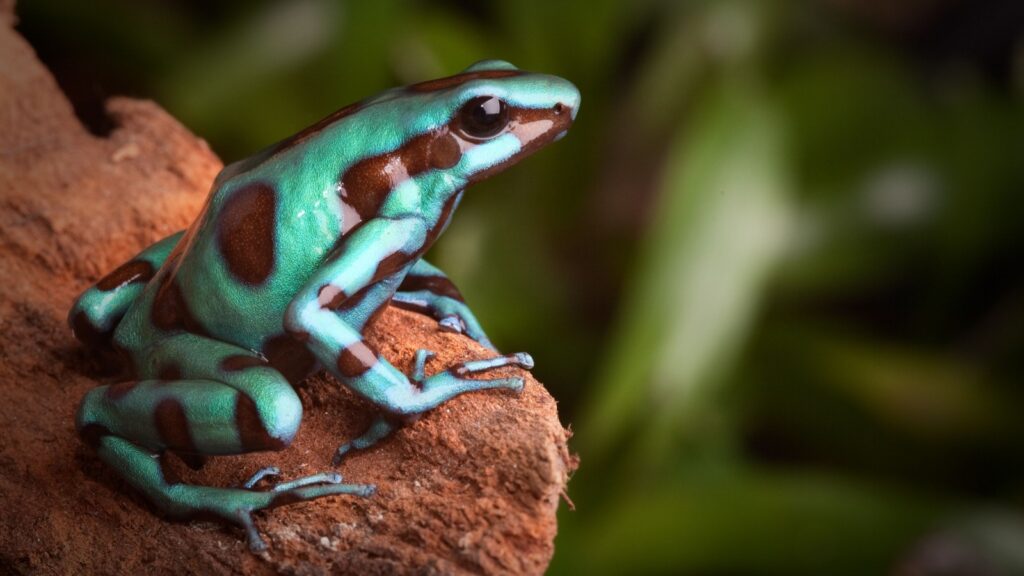
Despite its name, the golden poison frog isn’t always golden. These frogs can come in several colors, including yellow, orange, and pale green. The “golden” in their name refers to the most toxic variety, which is usually bright yellow. Their bright colors serve as a warning to predators, a phenomenon known as aposematic coloration.
Poison-Free in Captivity
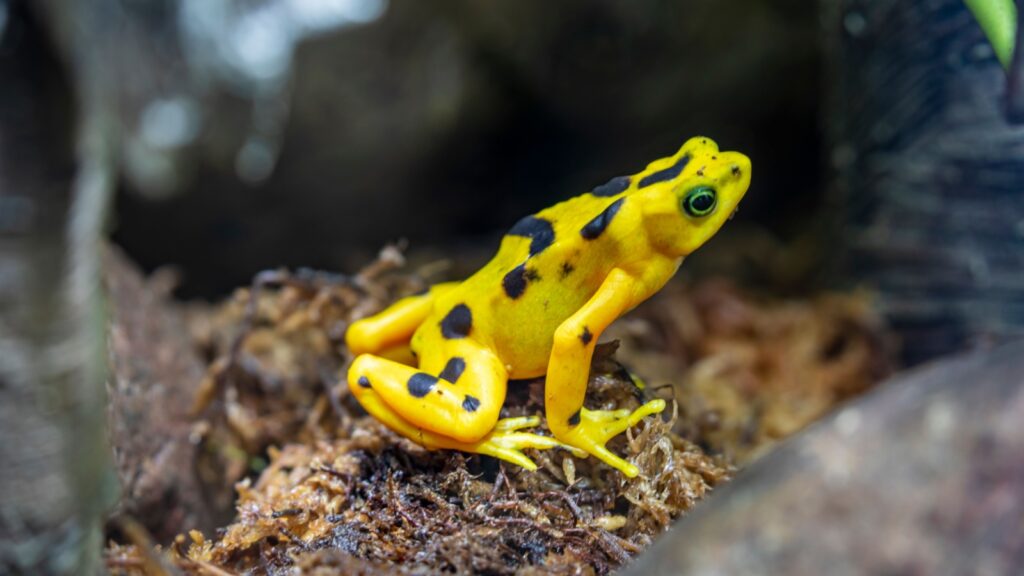
Interestingly, golden poison frogs raised in captivity are not poisonous. They develop their toxicity from their diet in the wild, likely from eating certain insects that contain precursors to the poison. In captivity, without access to these specific prey items, they don’t produce the deadly toxins. This fact has allowed scientists to study these frogs more closely without risk.
Smart Swimmers
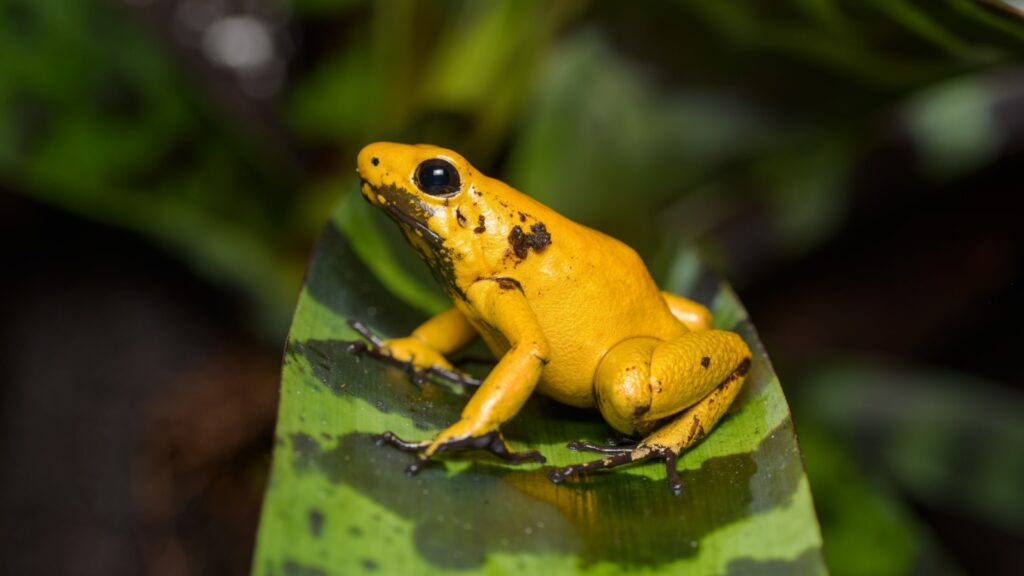
Despite being terrestrial, golden poison frogs are excellent swimmers. They have strong legs that help them move quickly on land and in water. When threatened, they can leap into nearby streams and swim to safety. Their swimming ability is unusual among poison dart frogs and helps them survive in their rainforest habitat.
Devoted Parents
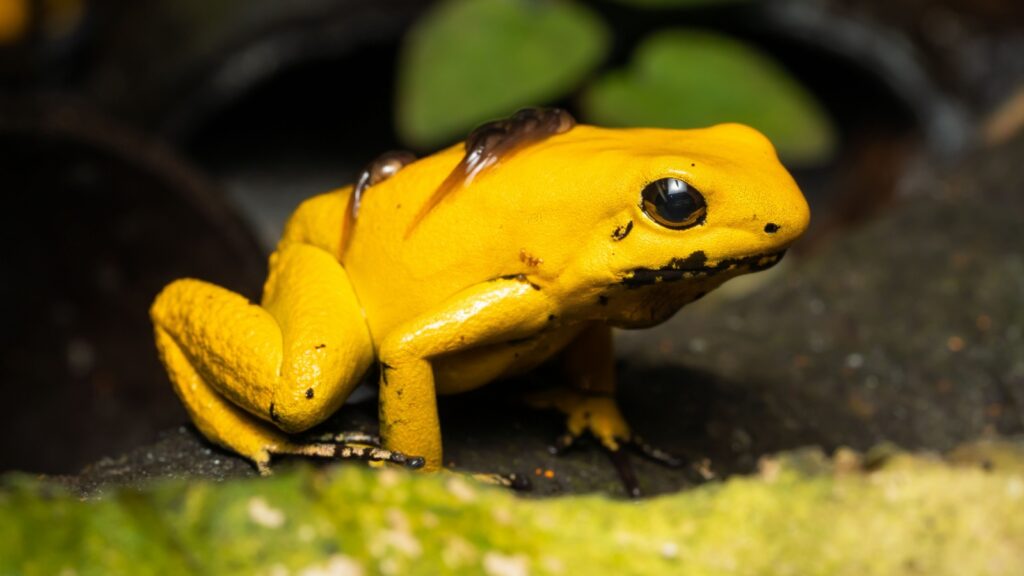
Golden poison frogs are remarkable parents. The females lay eggs on land, and the males guard them until they hatch. Once the tadpoles emerge, the father carries them on his back to water sources. He even selects small pools of water in plants or tree hollows for each tadpole, ensuring they have the best chance of survival.
Toxic Diet
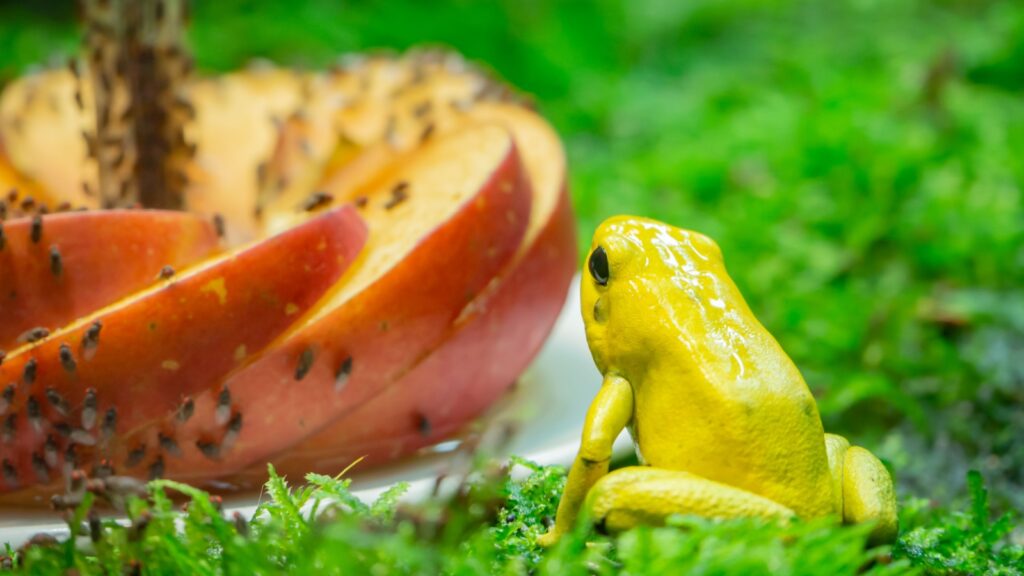
The golden poison frog’s diet is key to its toxicity. They primarily eat small arthropods like ants and mites. Scientists believe these insects contain alkaloids that the frogs then modify and concentrate in their skin glands. This process turns the frogs into living chemical weapons, protecting them from most predators.
Endangered Species
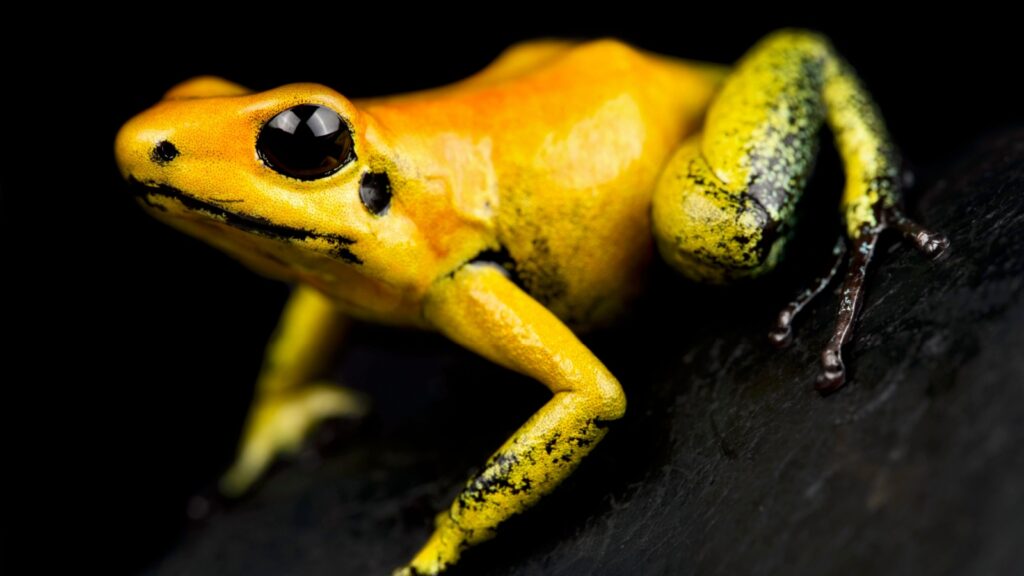
Sadly, the golden poison frog is considered endangered. Their habitat in the Colombian rainforest is shrinking due to deforestation and human activities. Climate change also poses a threat to their survival. Conservation efforts are underway to protect these unique creatures and their habitat.
Ancient Weapon
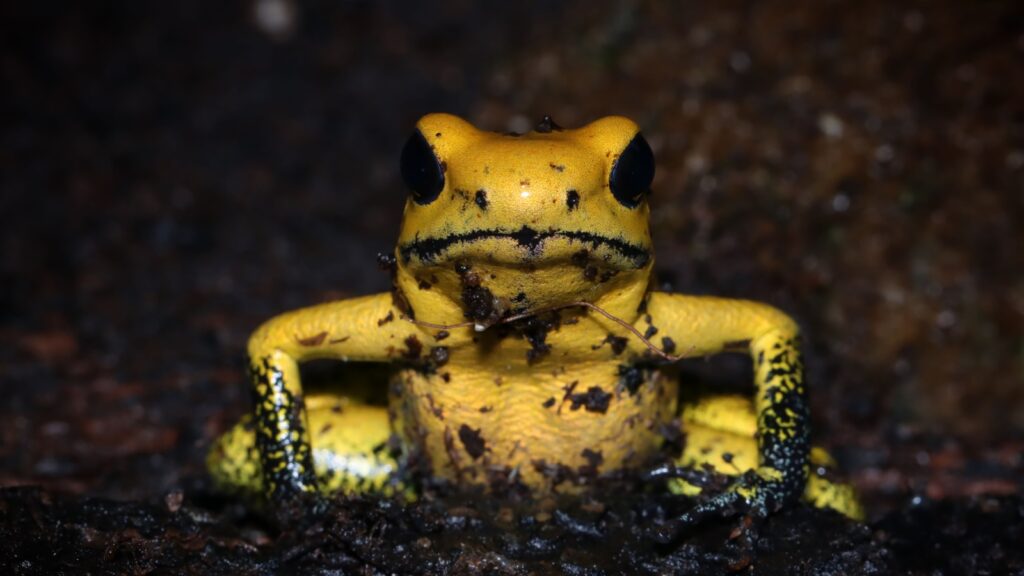
Indigenous people in Colombia have used the golden poison frog’s toxins for centuries. They would carefully rub their blow darts on the frog’s back to coat them with poison. These poison darts could remain lethal for up to two years. This practice gave rise to the common name “poison dart frog” for this and related species.
Unique Poison Resistance
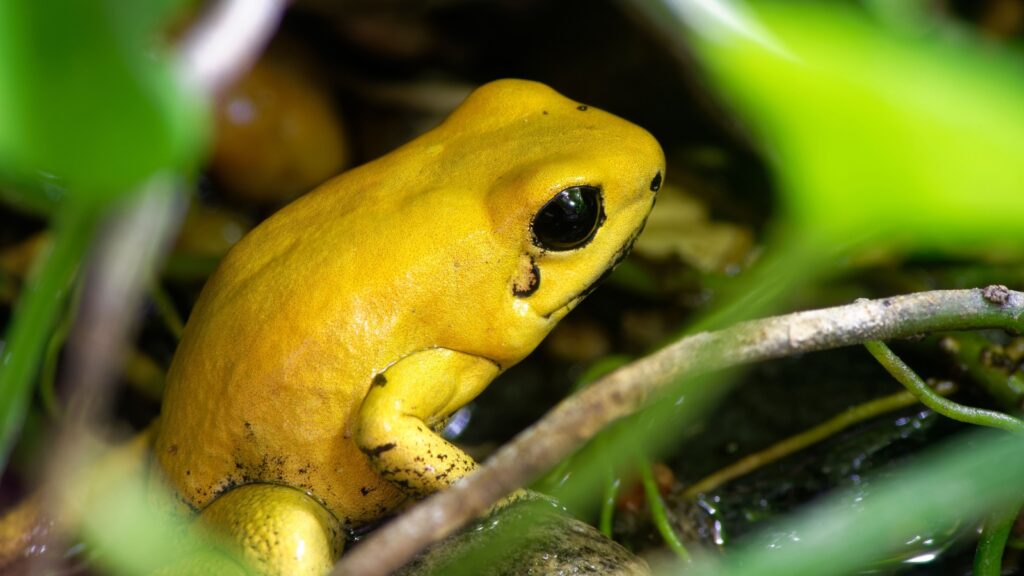
Golden poison frogs are immune to their own poison. They have evolved special proteins that prevent the toxin from binding to their nerve cells. This immunity is crucial for their survival, as they constantly carry the poison on their skin. Scientists are studying this resistance mechanism, hoping it might lead to new treatments for nerve diseases in humans.
Exceptional Vision
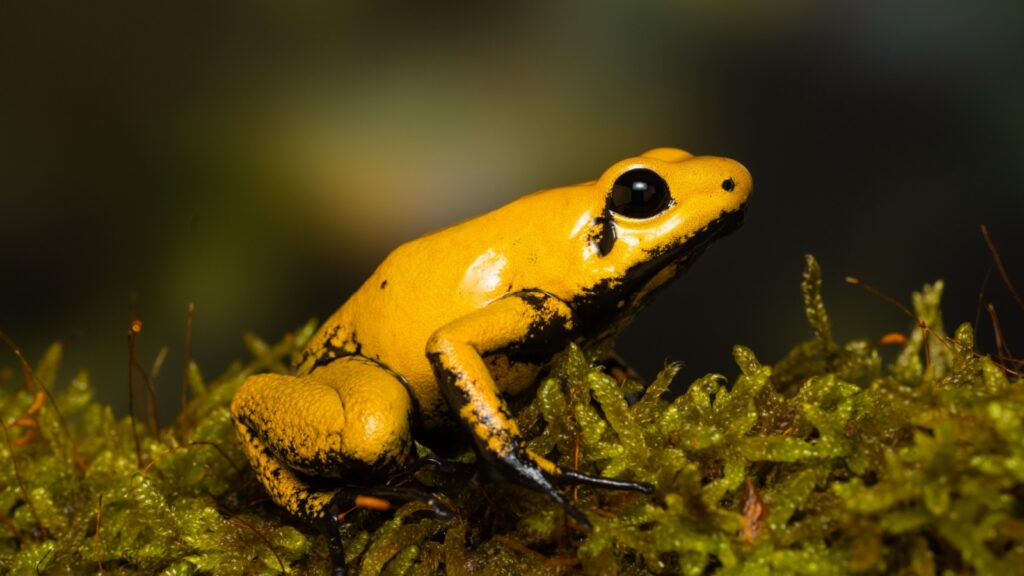
These frogs have excellent eyesight, which is unusual for amphibians. They can see and recognize potential prey from several meters away. Their good vision also helps them spot predators and escape quickly. This keen eyesight, combined with their bright colors, makes them highly aware of their surroundings.
Incredible Skin Texture
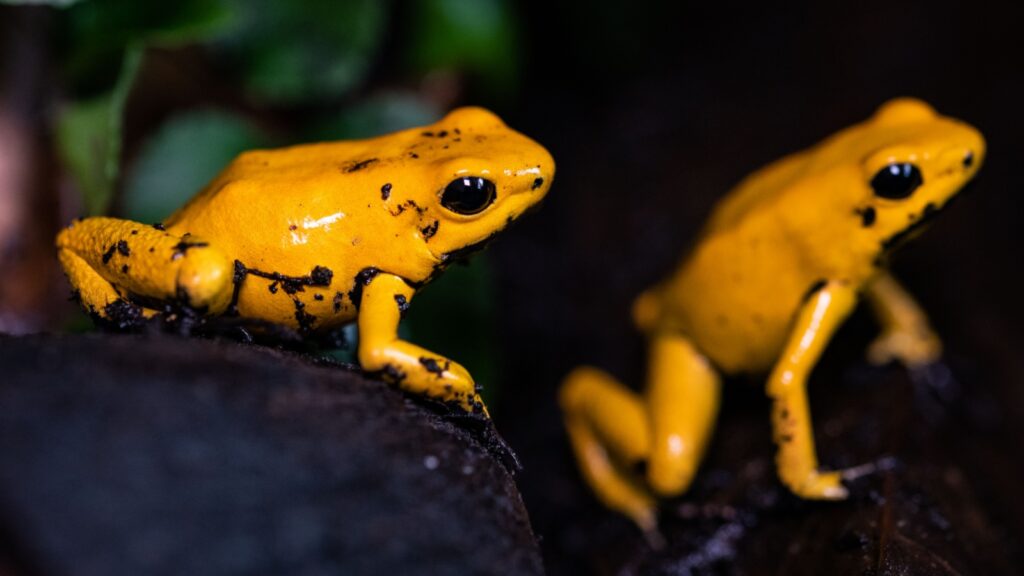
The golden poison frog’s skin is a marvel of nature. Unlike many other frogs, their skin isn’t slimy. Instead, it has a unique, slightly waxy texture that helps them retain moisture in their rainforest habitat. This special skin is covered in tiny glands that produce and store their deadly toxins. Interestingly, their skin is also highly permeable, allowing them to absorb oxygen directly through it. This feature lets them stay underwater for extended periods without needing to surface for air, giving them an edge in evading predators and hunting for food.

